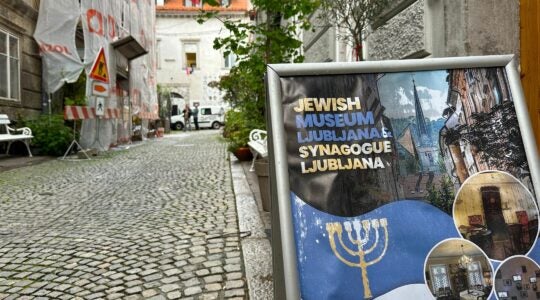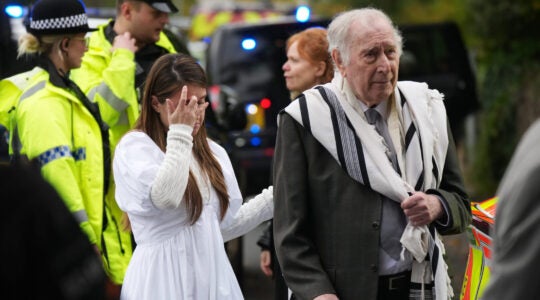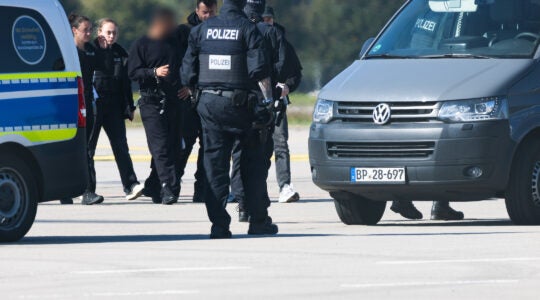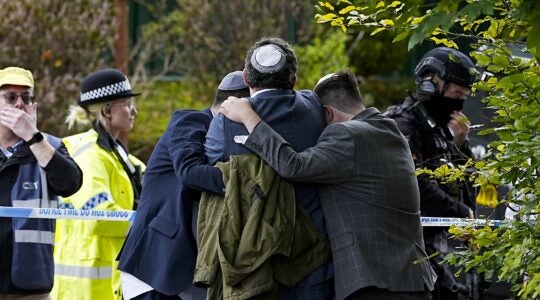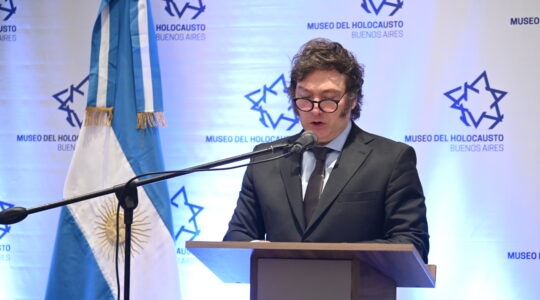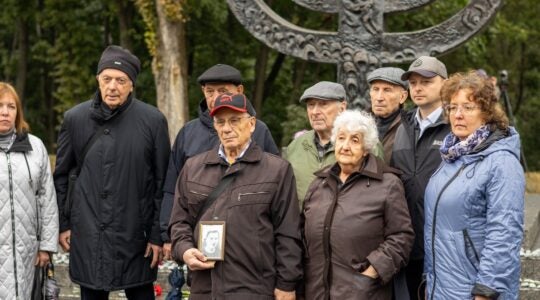MOSCOW (JTA) – Standing still for what seemed like the first time in days and looking at the sprawl of Jewish communal activity around him, Chaim Chesler finally paused for a moment to take it all in.
On every floor of the building, a different Kabbalat Shabbat service representing the separate religious denominations was beginning, and each service was nearly overflowing.
“The fact that the Litvaks and the Chasidim, plus Reform, can be hosting the same services is unheard of,” Chesler observed.
What Chesler and company accomplished over the weekend would be rare nearly anywhere in the Jewish world. Here in Russia, the diversity of attendance at the first Limmud Jewish Educational Conference to encompass the entire former Soviet Union seemed miraculous.
Limmud, which was founded in London, has been staging Jewish educational conferences around the world for 26 years, bringing together diverse bodies of Jews with relative ease. In the former Soviet Union, however, organizing this type of undertaking proved to be a monumental challenge.
The process, led by Chesler, who served here as regional director of the Jewish Agency for Israel from 1993 to 1996, and Jewish philanthropist Sandra Cahn of New York, took nearly three years and cost approximately $1.2 million. The funds were raised almost entirely by foreign donors, underscoring the continuing difficulty of fund raising in a society with virtually no history of charitable contributing.
The result was that more than 700 mostly young adult paying participants and dozens of unpaid volunteers from across the former Soviet Union flocked to the sprawling grounds of the Pakrovskoe Resort in the Moscow suburbs to attend interactive lectures on subjects as diverse as “Halacha and Pregnancy” and “Old Wine in New Bottles,” which focused on medieval Jewish poets.
And while it was mostly the lectures and socializing that seemed to drive the palpable excitement among the young people, community insiders and longtime observers appeared deeply satisfied by the atmosphere of detente.
Among veterans there was cautious optimism that the unity of the Limmud conference just may be a sign that Russian Jewry is moving beyond hyper-factionalism.
“I think we have an opportunity to see more cooperation,” said Mark Levin, executive director of NCSJ, which supports Jewish life in the former Soviet Union, and an observer of Jewish life here for nearly three decades. “I don’t want to read too much into what’s taken place, but these types of events generate an enthusiasm and atmosphere that lends itself to working together.”
Working together is not something for which community leaders here have a long history.
During the nearly two decades following the fall of communism, the Jewish community in the former Soviet republics has been defined as much by the infighting between religious and political groups as by their miraculous rebirth.
As religious and communal organizations fought to regain the participation and trust of the millions of Jews here with virtually no knowledge of their history, they battled equally hard to gain access to the communal properties being returned as reparations.
The hardscrabble fights, in an environment that hardly can be called politically neutral, led to a poisoning of the well between groups that was marked by increasingly ugly accusations and counter-accusations.
This deep feeling of enmity remains today, but many insiders suggested that while there is still a long way to go, the success of Limmud represents factionalism’s inevitable slide into irrelevance. There is a sense that Jewish groups here are beginning to realize that the community will move on, with or without their participation.
At Limmud’s opening ceremony on Oct. 18, both of Russia’s chief rabbis made a rare joint appearance. Rabbi Berel Lazar of the Chabad-led Federation of Jewish Communities of Russia, whose group has dominated Jewish life in recent years, and Rabbi Adolf Sheyevitch of the Congress of Jewish Religious Communities and Organizations of Russia took the stage one after the other to welcome the participants.
“I believe that the rabbis today who may not get along on a day-to-day basis understand that Limmud is here to stay,” Cahn told JTA. “They have to be part of the party or be left behind.”
Levin agrees that the cooperation across political and denominational lines, not only among local communal organizations but also by an array of international Jewish organizations such as the American Jewish Joint Distribution Committee and the Jewish Agency, was based on a general understanding that those who did not participate would lose out in the end.
“I think that the excitement that this conference has generated has spread to all segments of the community, so that those who weren’t able to participate originally have decided that this was something significant not just for the Russian community but for the communities throughout the former Soviet Union,” he said.
Dmitry Maryasis, Hillel’s director in Moscow and a member of the organizing committee, stressed the cooperation and sense of ownership among those involved with the planning.
“It didn’t belong to any group. It belonged to the community, and anyone who wanted to do something good for the community could be there,” he said.
Maryasis said the level of cooperation pleased him but did not surprise him.
Even for those who have observed the renaissance of post-Soviet Jewish life from its beginnings, the energy at the conference generated tremendous excitement.
“I’ve watched Russian Jewry, Soviet Jewry, go from literally nothing to this vast, vibrant community,” said Steven Schwager, executive vice president of the JDC. “Limmud is another step in the building of a great Jewish community.”
That opinion, shared by numerous leaders who spoke to JTA, clearly was supported in the reality of the crowded corridors here.
The atmosphere at the conference was nothing short of electric as young Jews, many connected with Hillel, talked, flirted and danced with a seemingly inexhaustible stamina.
The experience of Julia Viatkina, a 23-year-old attendee from the Chukotka region in the frozen reaches of Russia’s far north, reflects one way that projects like Limmud can reach young unaffiliated Jews who are unlikely to go to synagogue but nonetheless desire a connection to their roots and community.
“I liked, actually, the relationships of the people because the atmosphere was very friendly,” said Viatkina, who like many of the attendees had participated in the birthright israel program, which provides free trips to Israel for young Jewish adults.
She said what she liked most was the informal setting of the classes and the ability to ask questions of the lecturers, most of whom were Russian-speaking community members.
“In a normal school or institute, it’s hard to connect with lecturers or teachers because there’s a barrier,” she said.
Still, some attendees weren’t happy with the inclusiveness or with the lack of overtly religious content.
A young man in his early 20s, who identified himself as a member of one of Kiev’s Orthodox communities, said he was disappointed that Jewish text study was absent from the conference.
“There’s so much talk about how to be Jewish and studying Judaism, but it’s easy,” he said. “If you would like to learn about what it means to be Jewish, open up the Talmud and read.”
That type of criticism clearly was in the minority, however, and plans already are well under way for next year’s Limmud, to be held in Yalta and funded primarily by flamboyant Ukrainian oligarch Vadim Rabinovich.
Despite the great gains made this year, even the architect of Limmud himself stopped short of declaring victory over factionalism.
“I don’t believe it’s the end of the fighting,” Chesler said. “But I do think that it’s the beginning of creating a new generation which is not divided by the previous divisions and try to create something new, meaning different.”
JTA has documented Jewish history in real-time for over a century. Keep our journalism strong by joining us in supporting independent, award-winning reporting.
